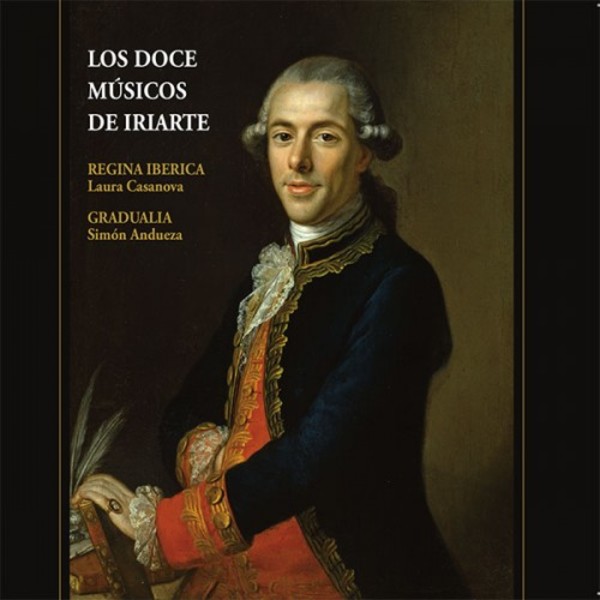
Los doce musicos de Iriarte (The Twelve Musicians of Iriarte)
Despatch Information
This despatch estimate is based on information from both our own stock and the UK supplier's stock.
If ordering multiple items, we will aim to send everything together so the longest despatch estimate will apply to the complete order.
If you would rather receive certain items more quickly, please place them on a separate order.
If any unexpected delays occur, we will keep you informed of progress via email and not allow other items on the order to be held up.
If you would prefer to receive everything together regardless of any delay, please let us know via email.
Pre-orders will be despatched as close as possible to the release date.
Label: Lindoro
Cat No: NL3031
Format: CD
Number of Discs: 1
Genre: Vocal/Choral
Release Date: 24th June 2016
Contents
Works
Corazon, causa teneisLas nuevas armas de amor
Dejame ingrata llorar
Exaltata est Sancta Dei Genitrix
Viento es la dicha de amor
Sepulto Domino
Ay, dulce sentimiento - Ay, pena amable
Eurotas y Diana
Gigante de perla y nacar
Vidi Speciosam
Artists
Regina IbericaGradualia
Conductors
Laura CasanovaSimon Andueza
Works
Corazon, causa teneisLas nuevas armas de amor
Dejame ingrata llorar
Exaltata est Sancta Dei Genitrix
Viento es la dicha de amor
Sepulto Domino
Ay, dulce sentimiento - Ay, pena amable
Eurotas y Diana
Gigante de perla y nacar
Vidi Speciosam
Artists
Regina IbericaGradualia
Conductors
Laura CasanovaSimon Andueza
About
The twelve protagonists – the Spanish composers on this record – are mentioned in the Canto III of the poem, the central one, the keystone, called ‘dignity and the use of music and specially the one at the temple’. The first two Cantos (besides the inexcusable prologue with the justification of the poem) are meant, respectively, to a be didactic explanation of the elements of musical language and the musical expression of the affections, while the fourth and fifth Cantos are centred on theatrical music and instrumental music practised in society. And so, the third Canto is centred on sacred music, the genre most identified with the technical fundamentals: polyphony and counterpoint. The twelve musicians were probably chosen by Iriarte for standing out in their command over those ‘elements of the music art’ explained in the first Canto and which, in painting, are perspective, design and colour.
This product has now been deleted. Information is for reference only.
Error on this page? Let us know here
Need more information on this product? Click here